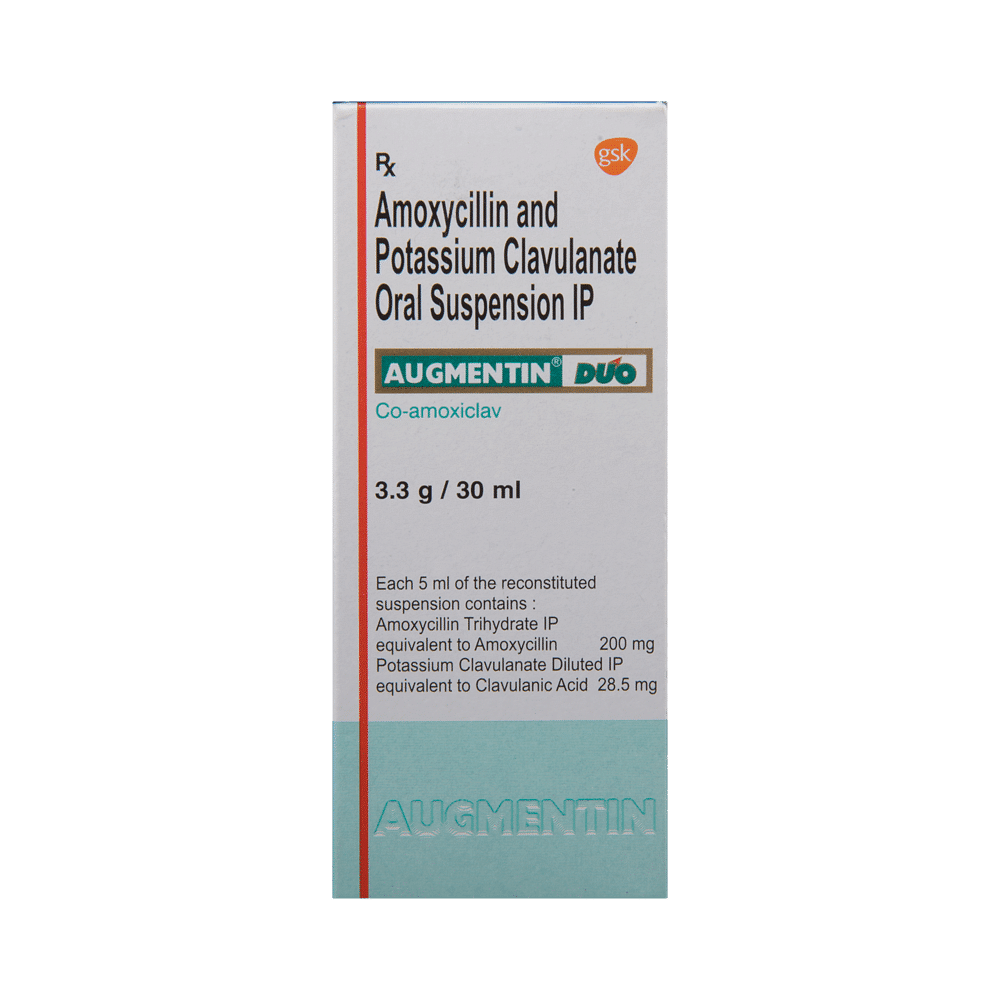
Segimox-CV 228.5 Dry Syrup
Manufacturer
Selaginella Life Sciences
Salt Composition
Amoxycillin (200mg) + Clavulanic Acid (28.5mg)
Key Information
Short Description
Segimox-CV 228.5 Dry Syrup is an antibiotic medicine that helps treat bacterial infections of the ear, nose, throat, chest, lungs, teeth, skin, and urinary tract.
Dosage Form
Oral Suspension
Introduction
Segimox-CV 228.5 Dry Syrup is an antibiotic medicine that helps treat bacterial infections of the ear, nose, throat, chest, lungs, teeth, skin, and urinary tract. It is capable of killing bacteria that have become resistant to other therapies and thus also helps treat tuberculosis that is resistant to other treatments.
Directions for Use
Your child must complete the entire course of antibiotics. Stopping too soon may cause the bacteria to multiply again or cause another infection.
How it works
Segimox-CV 228.5 Dry Syrup is an antibiotic. It has two active agents amoxycillin and clavulanic acid. Amoxycillin works by preventing the formation of the bacterial protective covering (cell wall) essential for the survival of the bacteria. Whereas clavulanic acid serves a special purpose of inhibiting an enzyme (beta-lactamase) that is produced by resistant bacteria. This makes the combination of amoxycillin and clavulanic acid an effective line of treatment for many types of infections.
Quick Tips
Your child must complete the entire course of antibiotics. Stopping too soon may cause the bacteria to multiply again or cause another infection. Your child may have a bitter taste in the mouth after the intake of Segimox-CV 228.5 Dry Syrup. Eating citrus fruit or sipping plenty of water or fruit juice may help. Encourage your child to drink plenty of water in case diarrhea develops as a side effect. Never give Segimox-CV 228.5 Dry Syrup until and unless prescribed by the doctor. Do not give Segimox-CV 228.5 Dry Syrup to treat common cold and flu-like symptoms caused by viruses. Never save medicine for future illnesses. Check ‘expiry’ before giving Segimox-CV 228.5 Dry Syrup to your child. Stop Segimox-CV 228.5 Dry Syrup immediately if your child develops an itchy rash, facial swelling, or breathing difficulty.
Related Medicines

Augmentin Duo Suspension

Cloxitor Oral Suspension

K-Mox-CV Dry Syrup

Moxylio Dry Syrup

ACL-Duo Dry Syrup

Bactoclav Dry Syrup

Nojinox Oral Suspension

Glyph-CV Dry Syrup

Amoxykon-Clav Dry Syrup

Amoxyrich CV Oral Suspension
Frequently asked questions
Can other medicines be given at the same time as Segimox-CV 228.5 Dry Syrup?
It's important to tell your doctor about all medications your child is taking before starting Segimox-CV 228.5 Dry Syrup to ensure safe use. Consulting with a medical professional is crucial for preventing potential drug interactions or adverse effects.
Can I get my child vaccinated while on treatment with Segimox-CV 228.5 Dry Syrup?
Generally, antibiotics do not interfere with vaccines or cause a negative reaction in children who have recently been immunized. However, vaccination is generally postponed after an illness until your child recovers completely.
Which lab tests may my child undergo while taking Segimox-CV 228.5 Dry Syrup on a long-term basis?
If the treatment lasts for a prolonged period, your doctor might order kidney and liver function tests to monitor your child's condition.
Can I give a higher than the recommended dose of Segimox-CV 228.5 Dry Syrup to my child?
Giving a higher dose of this medicine can increase side effects and risks. If your child experiences worsening symptoms, consult their doctor for an evaluation.
Can I stop giving Segimox-CV 228.5 Dry Syrup to my child when the symptoms are relieved?
It is not recommended to discontinue the medication without first finishing the full course, even if you think your child feels better. Symptoms might improve before the infection fully clears, and continuing the medicine may provide further benefits.
Can the use of Segimox-CV 228.5 Dry Syrup cause diarrhea?
Yes, Segimox-CV 228.5 Dry Syrup can cause diarrhea as it is an antibiotic that kills harmful bacteria. The medication may also affect beneficial bacteria in your child's stomach, leading to diarrhea. Encourage your child to drink plenty of fluids if they experience this side effect. If the diarrhea persists or you notice signs of dehydration (reduced urination with dark-colored and strong-smelling urine), contact your doctor for further guidance.
Do all viral common colds result in secondary bacterial infection?
Most viral infections do not lead to bacterial infection. However, it's essential to consult with a healthcare professional about whether antibiotics are needed in specific cases, as they can sometimes worsen the situation.
The mucus coming out of my child’s nose is yellow-green. Is this a sign of a bacterial infection?
While yellow or green mucus during a common cold is often normal, it is not always an indication of a bacterial infection. The symptoms typically last for 7-10 days and are usually harmless. It's crucial to consult with your doctor if you observe any concerning changes in your child's health.
Is there any sign which shows that my child needs immediate medical attention?
Seek immediate medical attention for signs of severe allergic reactions (difficulty breathing, skin rashes), gastrointestinal infections (diarrhea), and liver damage (weakness, paleness, vomiting). These side effects are less common but require prompt medical intervention.


